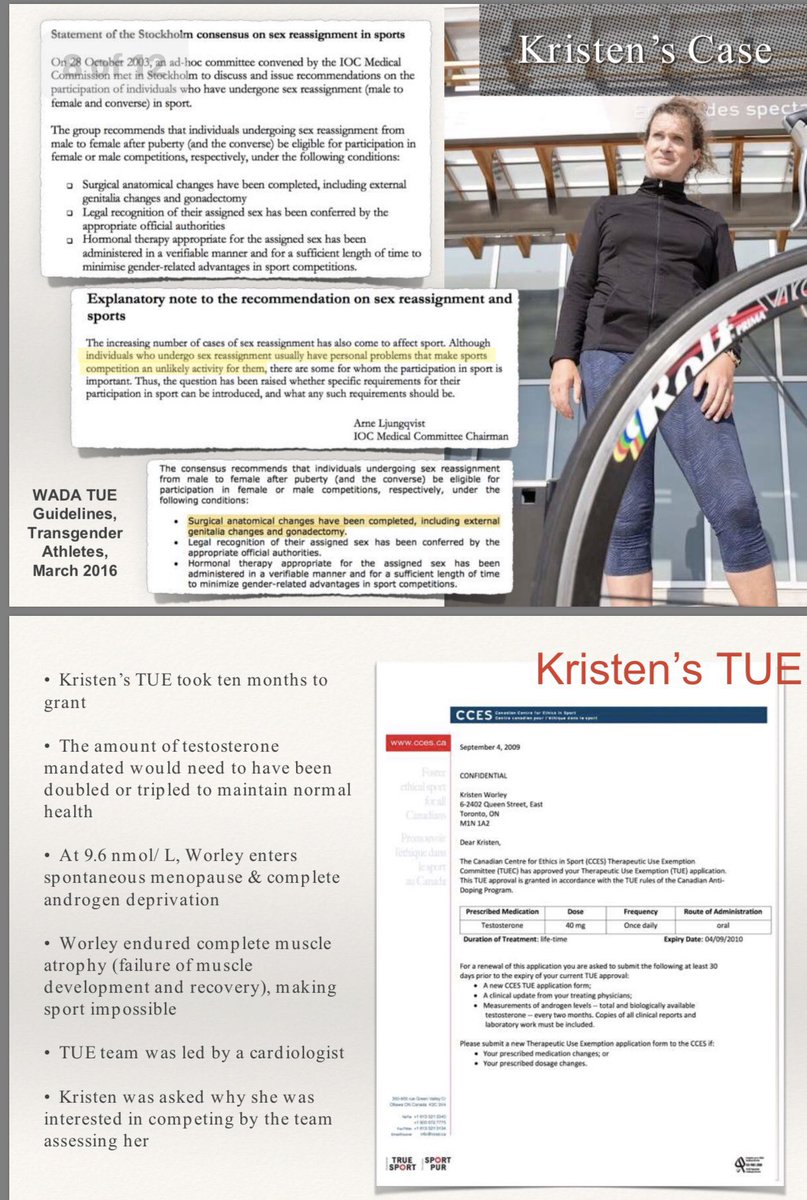
Sports can still ban Warren but not Kirsti anymore, thank you @iocmedia go fuck yourself @WorldRugby 
https://twitter.com/pinkadvocate/status/1461162241995251721

Under the new IOC framework sports now need to measure for actual advantage, rather than just assuming based on sex/gender. This will torpedo nonsense like the @WorldRugby blanket ban proposed UK rugby 'only tall cis women' rule. 



In deciding whether trans & intersex women should be allowed to compete as women, who has the burden of proof in the debate? The IOC’s answer is CRYSTAL clear: those sports who seek to exclude.
The new IOC framework has rightly so identified it is the disparity in size/strength that is relevant, not the source of the disparity.
The sex, gender or chromosomal status of an athlete does not create any inherent danger or risk to safety or fairness. Rather, it is dis- parities in strength, speed & endurance and/or physique of each individual athlete that may, depending on the sport.
To the extent that larger & stronger athletes (trans, intersex or cis) may pose a H & S risk, it is best to address that risk by amending the rules of the sport to engineer out (or at least minimise) the risks at their source (to employ more mainstream WHS parlance).
A separate trans policy is not necessary to address physical safety risks as The gender status or identity of an individual does not create any inherent danger or risk to safety. Rather, disparities in strength, speed, endurance &/or physique may do so,depending on the sport.
It is possible that a larger & stronger trans or intersex athlete could pose a safety risk to smaller cis athletes (and vice-versa). 



However, sports like Rugby AFL attract persons of different strengths and physiques, and a team’s success often can depend upon a skilful blending of these differences.
To exclude bigger and stronger transgender and intersex athletes from these sports on safety grounds would create a precedent that would argue for the exclusion of equally big and strong cisgender athletes
remembering that, from a safety perspective, it is the disparity in size and strength that is relevant, not the source of the disparity.
In these sports like rugby and AFL, the risks from disparity in strength and physique are mitigated and managed through the rules of the sport.
This was made clear in the AFL’s 2018 Policy which stated that the rules of the sport (including those dealing with rough conduct, unsafe play & other on-field disciplinary matters)
are designed to ensure the safety of all AFLW & AFL (men’s) players, including gender-diverse and cis players.
It is also clear in the 2020 AFL Policy that while a trans or non-binary person may be excluded on the basis that their participation poses an unacceptable safety risk,
Such an exclusion would only arise in ‘exceptional circumstances’ involving a significant disparity in physique that cannot be managed safely within the rules of the sport.
Importantly, the AFL 2020 Policy states it ‘will not arise simply from the proposed participation of a gender diverse person’.
The AFL’s ‘exceptional circumstances’ approach stands in stark contrast to World Rugby’s blanket ban & the ten states in the Usa that have recently legislated blanket bans of trans athletes in school sports.
The AFL 2020 policy is also in stark contrast to the recent recommendation in the UK to ban trans athletes as a monolithic community in some sports. This is not allowed anymore, thank you @iocmedia ❤️
End
End
• • •
Missing some Tweet in this thread? You can try to
force a refresh









